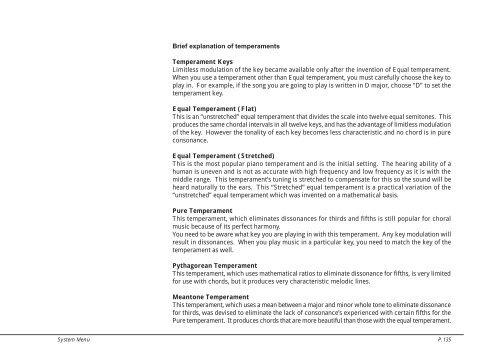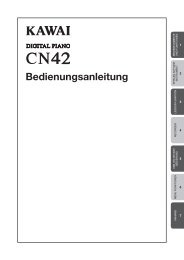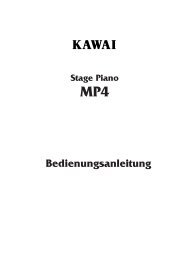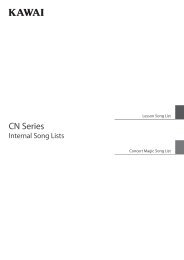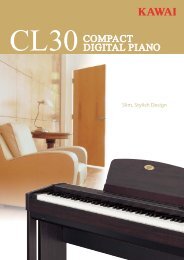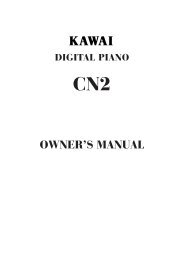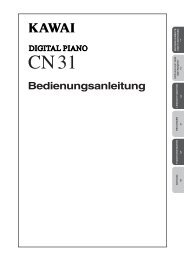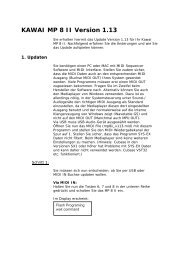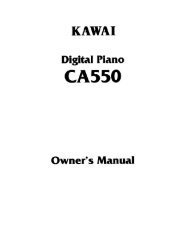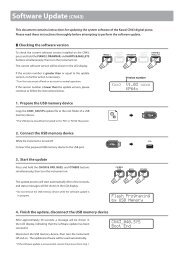You also want an ePaper? Increase the reach of your titles
YUMPU automatically turns print PDFs into web optimized ePapers that Google loves.
Brief explanation of temperaments<br />
Temperament Keys<br />
Limitless modulation of the key became available only after the invention of Equal temperament.<br />
When you use a temperament other than Equal temperament, you must carefully choose the key to<br />
play in. For example, if the song you are going to play is written in D major, choose “D” to set the<br />
temperament key.<br />
Equal Temperament (Flat)<br />
This is an “unstretched” equal temperament that divides the scale into twelve equal semitones. This<br />
produces the same chordal intervals in all twelve keys, and has the advantage of limitless modulation<br />
of the key. However the tonality of each key becomes less characteristic and no chord is in pure<br />
consonance.<br />
Equal Temperament (Stretched)<br />
This is the most popular piano temperament and is the initial setting. The hearing ability of a<br />
human is uneven and is not as accurate with high frequency and low frequency as it is with the<br />
middle range. This temperament’s tuning is stretched to compensate for this so the sound will be<br />
heard naturally to the ears. This “Stretched” equal temperament is a practical variation of the<br />
“unstretched” equal temperament which was invented on a mathematical basis.<br />
Pure Temperament<br />
This temperament, which eliminates dissonances for thirds and fifths is still popular for choral<br />
music because of its perfect harmony.<br />
You need to be aware what key you are playing in with this temperament. Any key modulation will<br />
result in dissonances. When you play music in a particular key, you need to match the key of the<br />
temperament as well.<br />
Pythagorean Temperament<br />
This temperament, which uses mathematical ratios to eliminate dissonance for fifths, is very limited<br />
for use with chords, but it produces very characteristic melodic lines.<br />
Meantone Temperament<br />
This temperament, which uses a mean between a major and minor whole tone to eliminate dissonance<br />
for thirds, was devised to eliminate the lack of consonance’s experienced with certain fifths for the<br />
Pure temperament. It produces chords that are more beautiful than those with the equal temperament.<br />
System Menu P. 135


